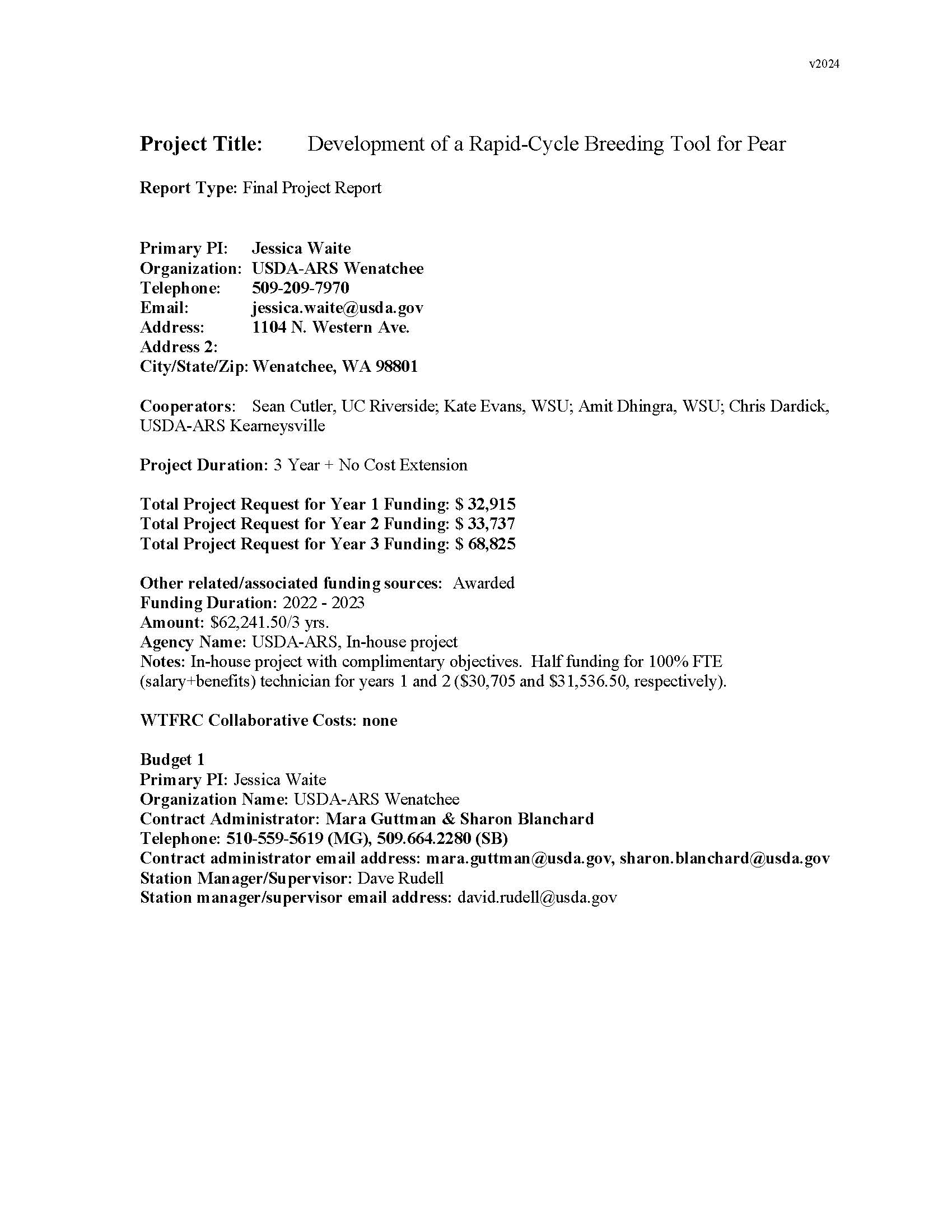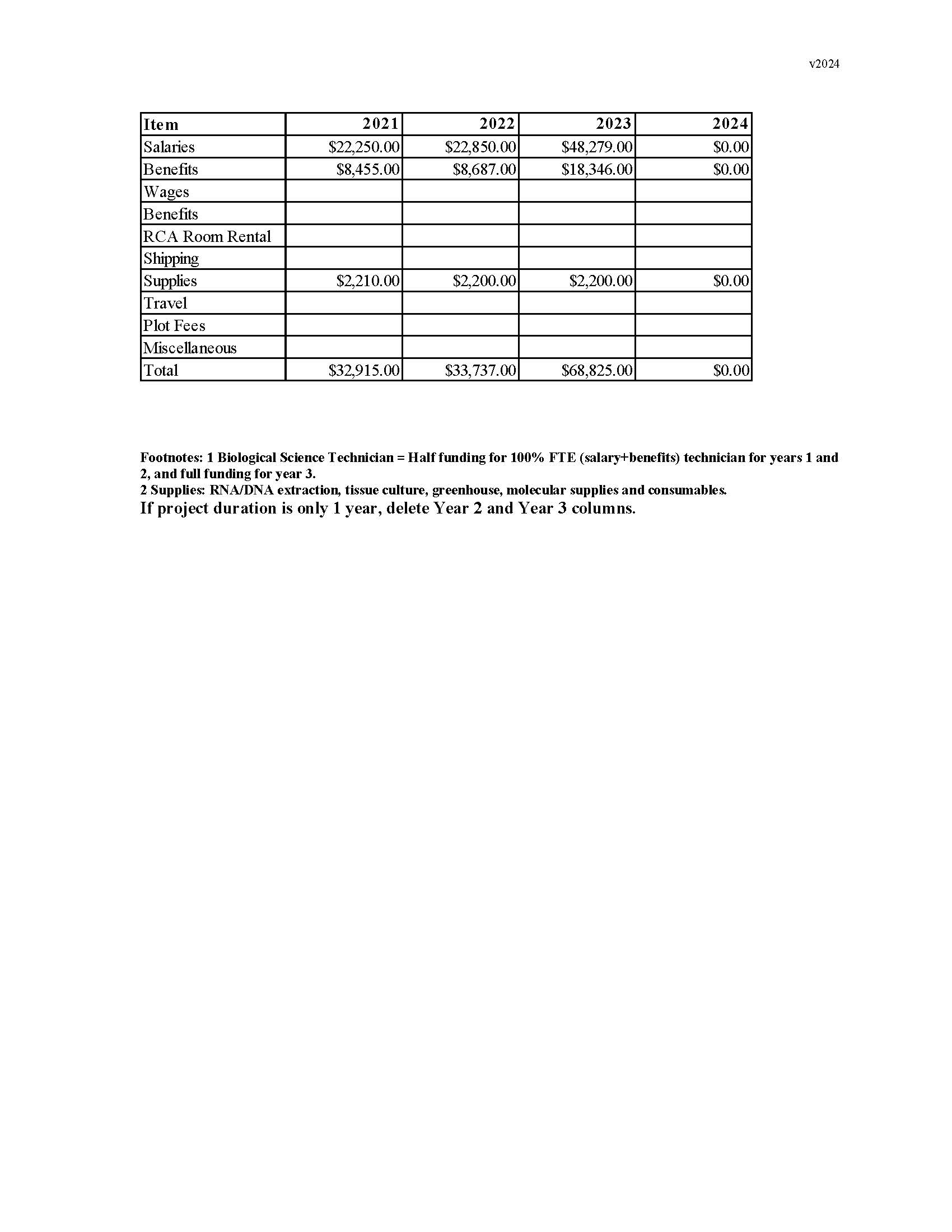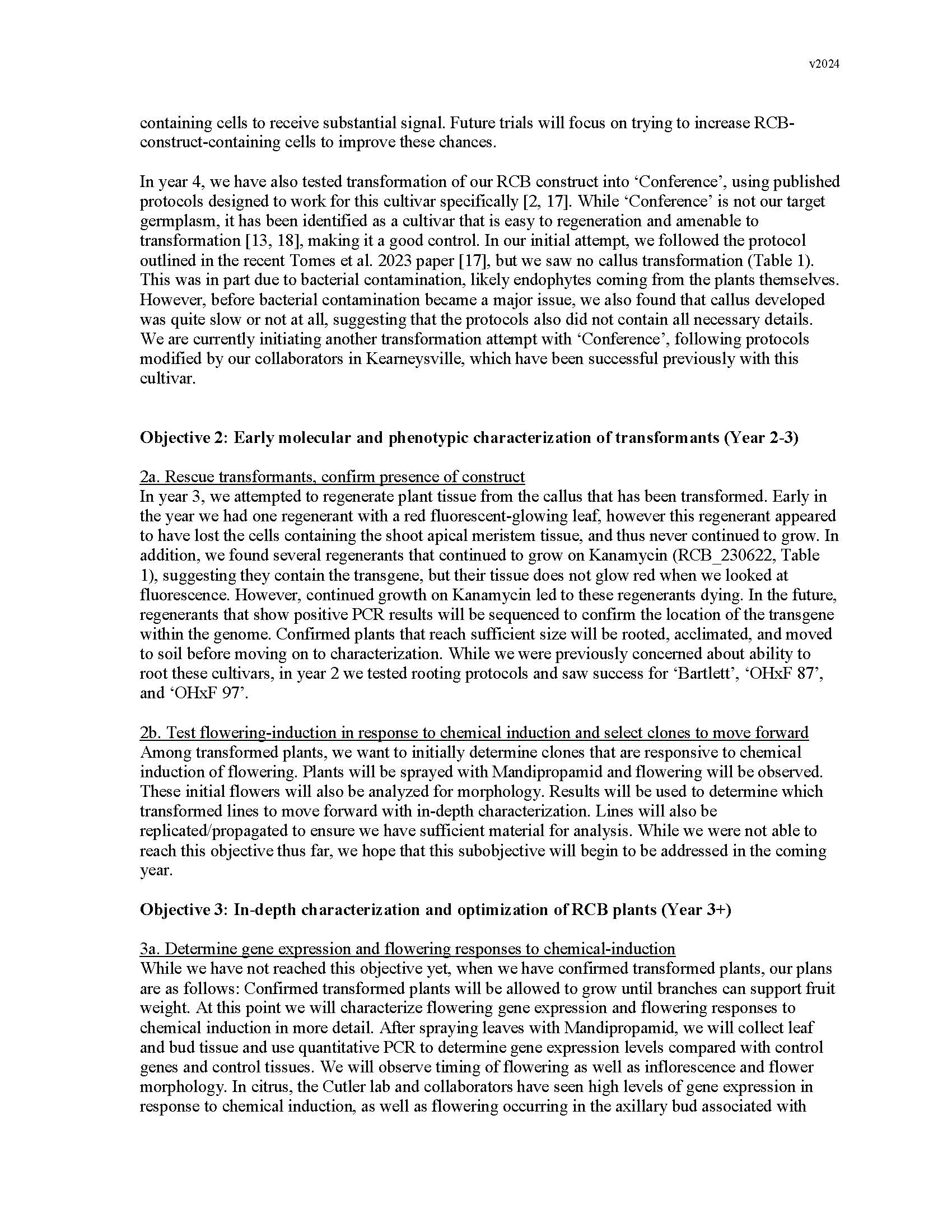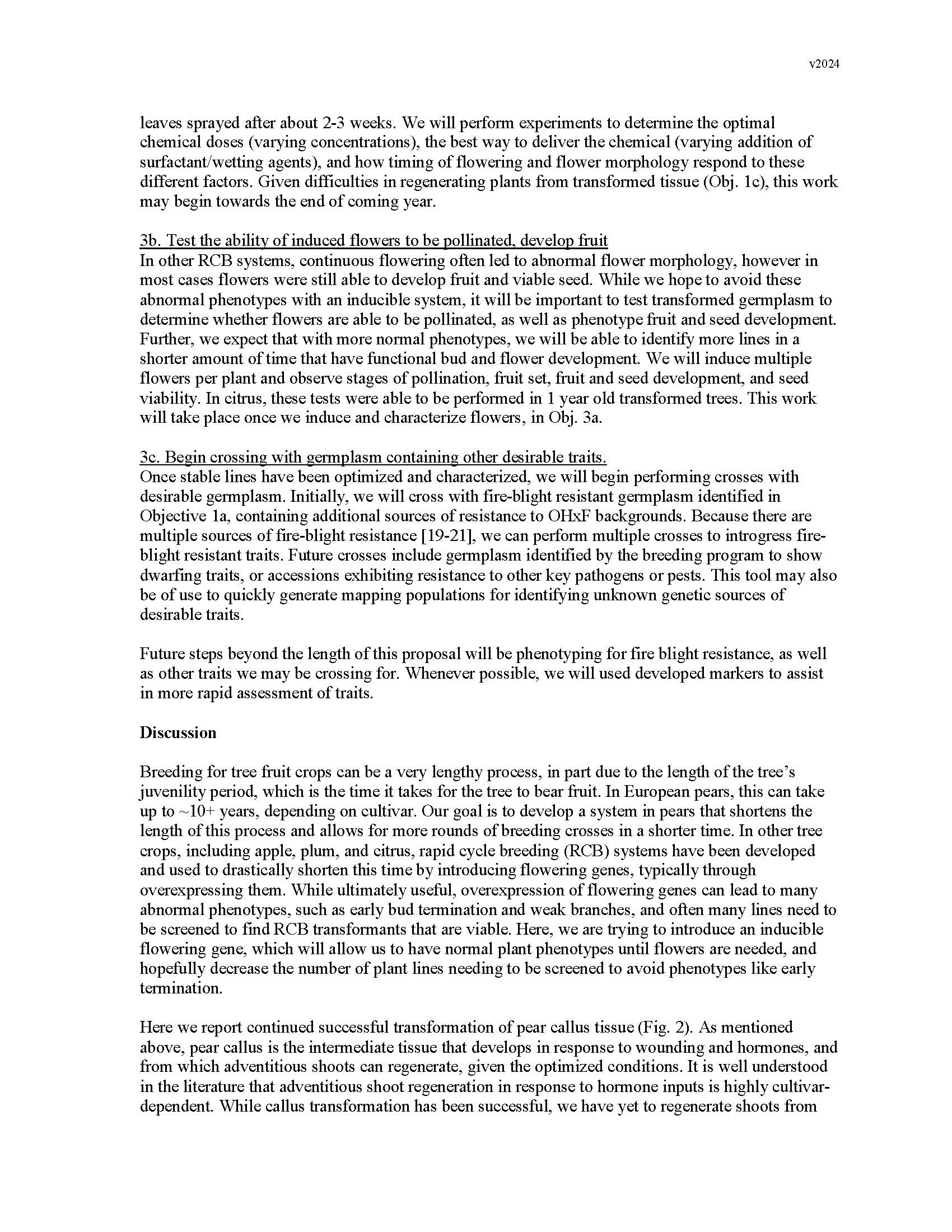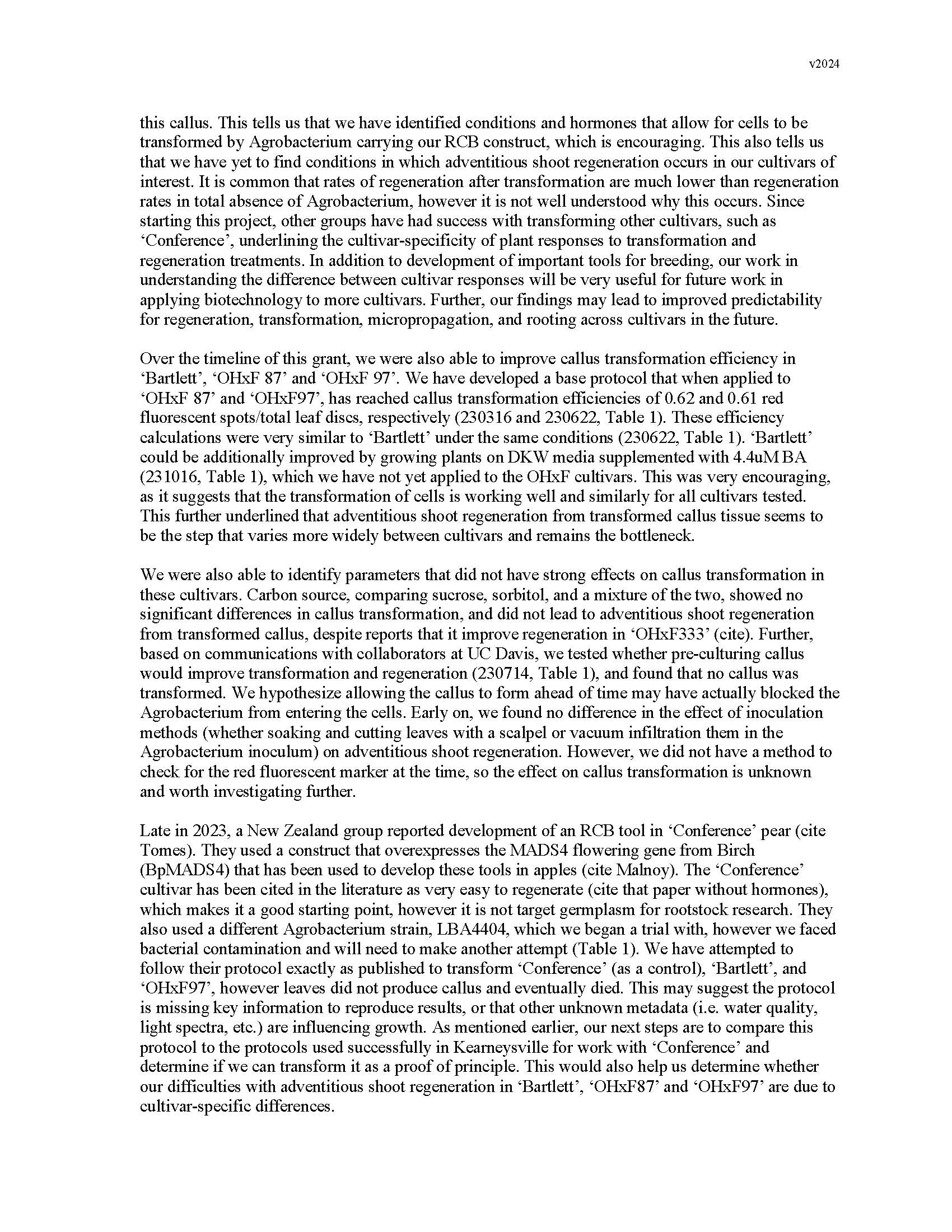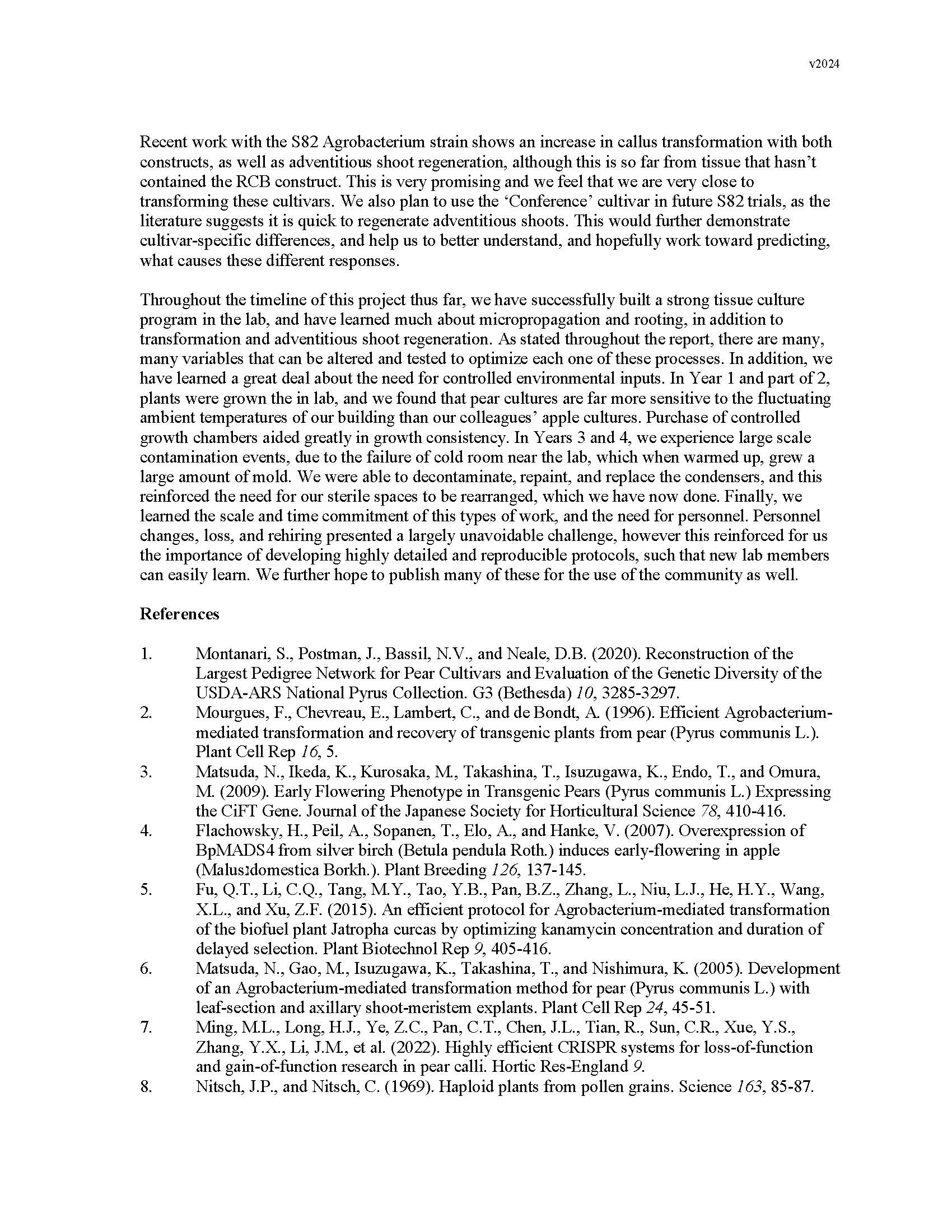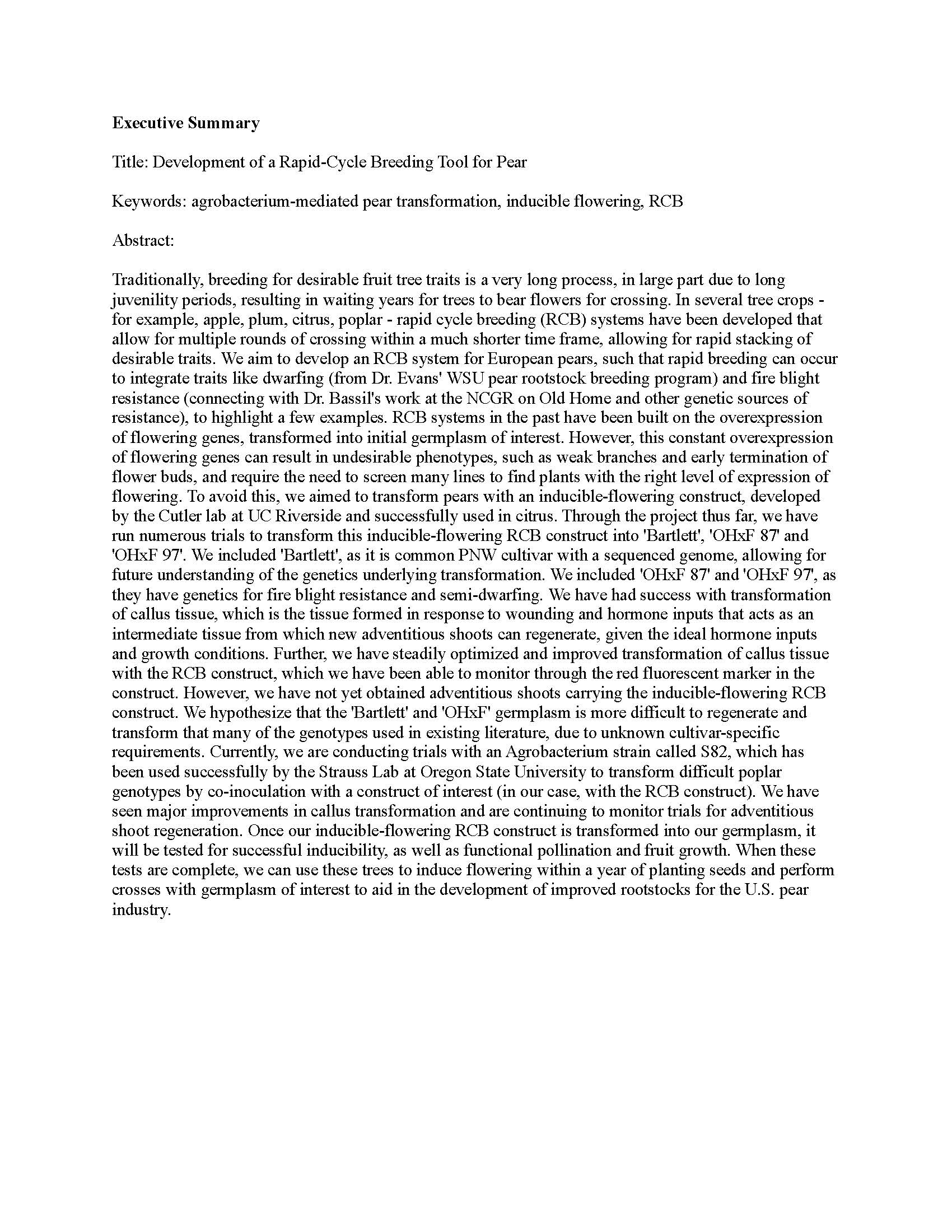Development of a Rapid-Cycle Breeding Tool for Pear
Author: Jessica Waite
Published: 2025
Summary: Traditionally, breeding for desirable fruit tree traits is a very long process, in large part due to long juvenility periods, resulting in waiting years for trees to bear flowers for crossing. In several tree crops - for example, apple, plum, citrus, poplar - rapid cycle breeding (RCB) systems have been developed that allow for multiple rounds of crossing within a much shorter time frame, allowing for rapid stacking of desirable traits. We aim to develop an RCB system for European pears, such that rapid breeding can occur to integrate traits like dwarfing (from Dr. Evans' WSU pear rootstock breeding program) and fire blight resistance (connecting with Dr. Bassil's work at the NCGR on Old Home and other genetic sources of resistance), to highlight a few examples. RCB systems in the past have been built on the overexpression of flowering genes, transformed into initial germplasm of interest. However, this constant overexpression of flowering genes can result in undesirable phenotypes, such as weak branches and early termination of flower buds, and require the need to screen many lines to find plants with the right level of expression of flowering. To avoid this, we aimed to transform pears with an inducible-flowering construct, developed by the Cutler lab at UC Riverside and successfully used in citrus. Through the project thus far, we have run numerous trials to transform this inducible-flowering RCB construct into 'Bartlett', 'OHxF 87' and 'OHxF 97'. We included 'Bartlett', as it is common PNW cultivar with a sequenced genome, allowing for future understanding of the genetics underlying transformation. We included 'OHxF 87' and 'OHxF 97', as they have genetics for fire blight resistance and semi-dwarfing. We have had success with transformation of callus tissue, which is the tissue formed in response to wounding and hormone inputs that acts as an intermediate tissue from which new adventitious shoots can regenerate, given the ideal hormone inputs and growth conditions. Further, we have steadily optimized and improved transformation of callus tissue with the RCB construct, which we have been able to monitor through the red fluorescent marker in the construct. However, we have not yet obtained adventitious shoots carrying the inducible-flowering RCB construct. We hypothesize that the 'Bartlett' and 'OHxF' germplasm is more difficult to regenerate and transform that many of the genotypes used in existing literature, due to unknown cultivar-specific requirements. Currently, we are conducting trials with an Agrobacterium strain called S82, which has been used successfully by the Strauss Lab at Oregon State University to transform difficult poplar genotypes by co-inoculation with a construct of interest (in our case, with the RCB construct). We have seen major improvements in callus transformation and are continuing to monitor trials for adventitious shoot regeneration. Once our inducible-flowering RCB construct is transformed into our germplasm, it will be tested for successful inducibility, as well as functional pollination and fruit growth. When these tests are complete, we can use these trees to induce flowering within a year of planting seeds and perform crosses with germplasm of interest to aid in the development of improved rootstocks for the U.S. pear industry.
Keywords:

